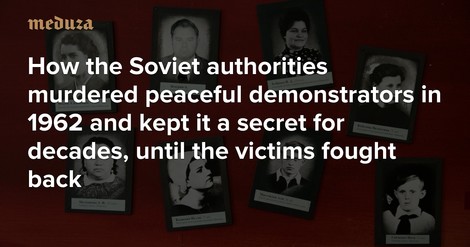Your podcast discovery platform
Curious minds select the most fascinating podcasts from around the world. Discover hand-piqd audio recommendations on your favorite topics.

piqer for: Deep Dives Global finds Globalization and politics Health and Sanity
Daria Sukharchuk is a journalist based in Berlin, where she works as a news anchor for Russian-language OstWest.tv. Her writing has appeared in Motherboard and ZEIT Online, Cosmopolitan, as well as Afisha (Moscow's leading city magazine). She specializes on the topic of human rights, migration, and mental health.
She has her BA in Chinese history, and, never having forgotten her history background, has also contributed to the educational project1917.com.
How A Peaceful Demonstration Was Attacked In The USSR And The Secret Kept For Thirty Years
When it comes to covering up a single murder, we can easily imagine it being done. But how can one possibly keep secret a shooting of dozens of people on a crowded city square? In the USSR, this went on for 30 years.
In May 1962, workers in the industrial southern city of Novocherkassk went on strike, because food prices (centrally regulated by the government) had gone up by 25-30%. This put the poorly paid workers (most of whom could not afford to live in their own flats) on the brink of starvation and triggered protest at the two biggest factories in the city. The workers barricaded the major railway that went through the city, connecting Moscow to the Caucasus, the Black Sea and other southern cities, and demanded better pay and affordable food. Then, they went to the central square of Novocherkassk, which quickly filled with people curious to see what was going on.The central government, intolerant of any protest, commanded the police to shoot the protesters. Joined by the army, they fired rifles into the crowd, killing 25 people and injuring 85. Most of the victims were not even protesters — they were just caught n the fire. Their bodies were driven away by trucks and buried in the graveyards of neighboring villages. A wave of arrests followed, and six people were sent to the labor camps. The policemen, the doctors, and the witnesses were forbidden to talk about what happened under the threat of death. None of them talked about what happened until the USSR collapsed, not even to their families.It was only in the 1990s that the "second Katyn" was revisited, its victims re-buried, and the survivors given (if meagre) compensations. After 30 years, they could have closure, and start healing.Stay up to date – with a newsletter from your channel on Global finds.
